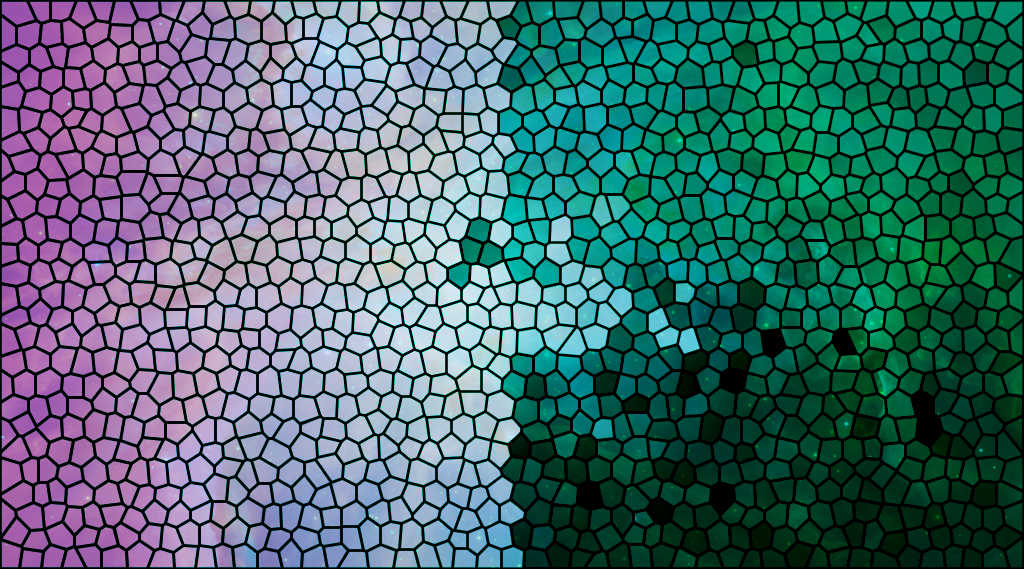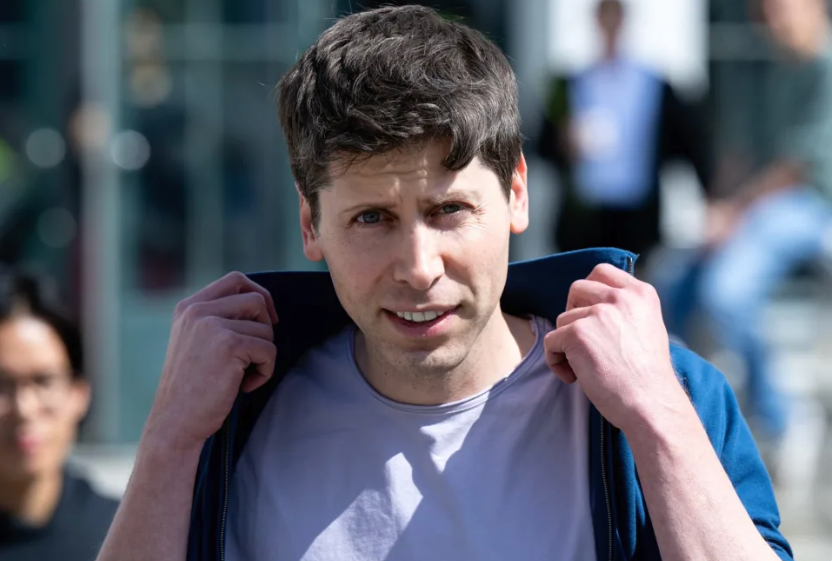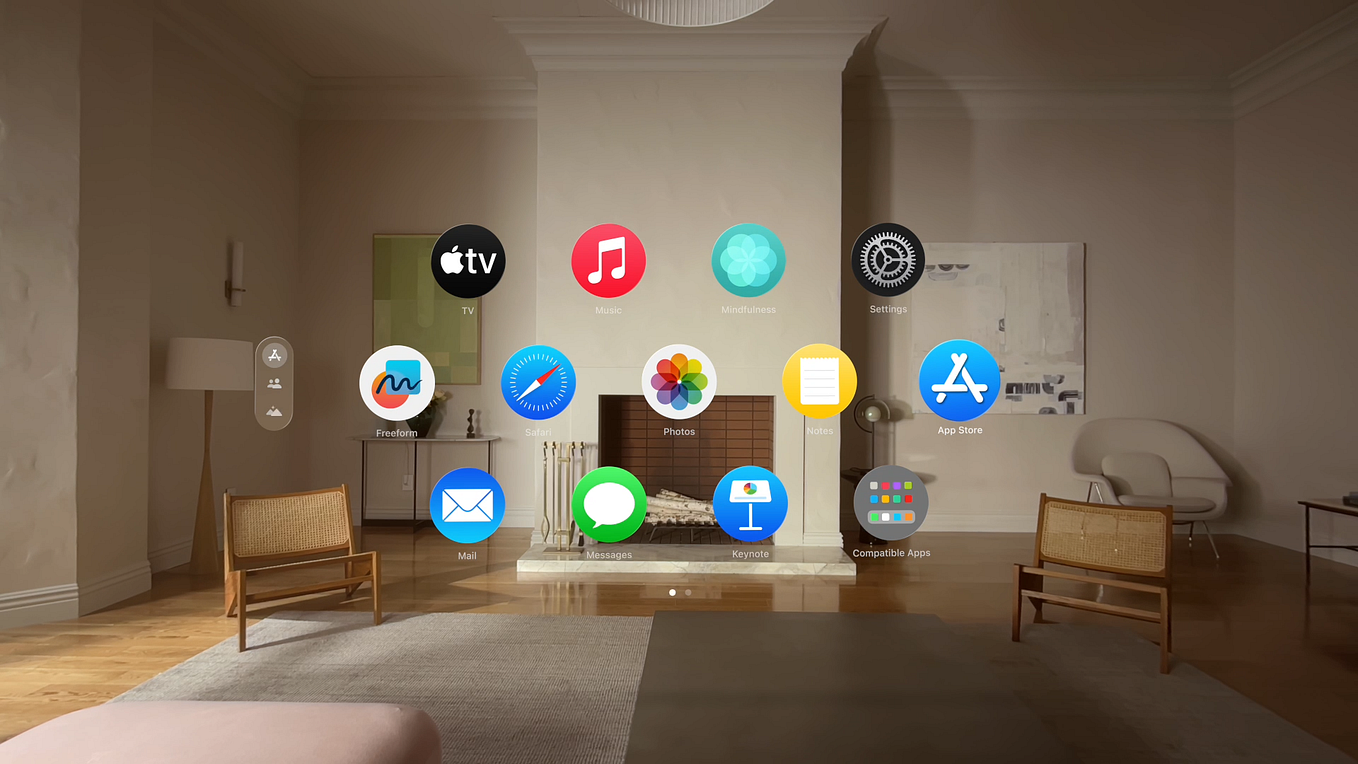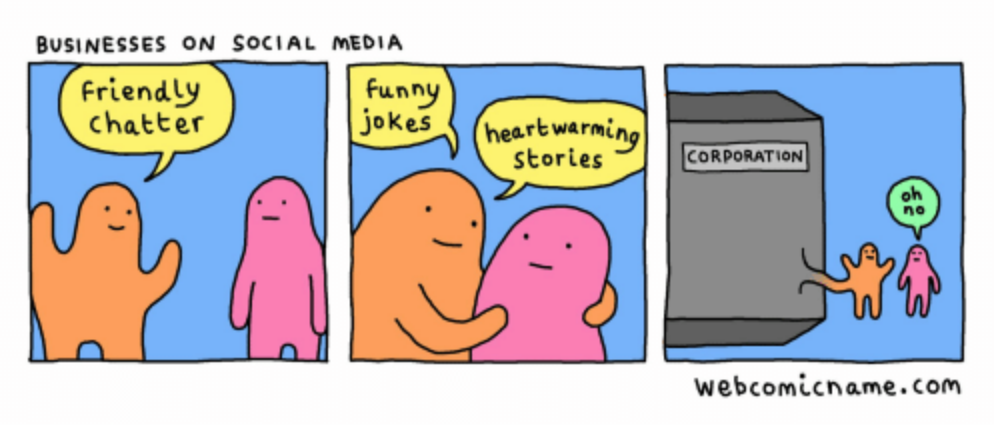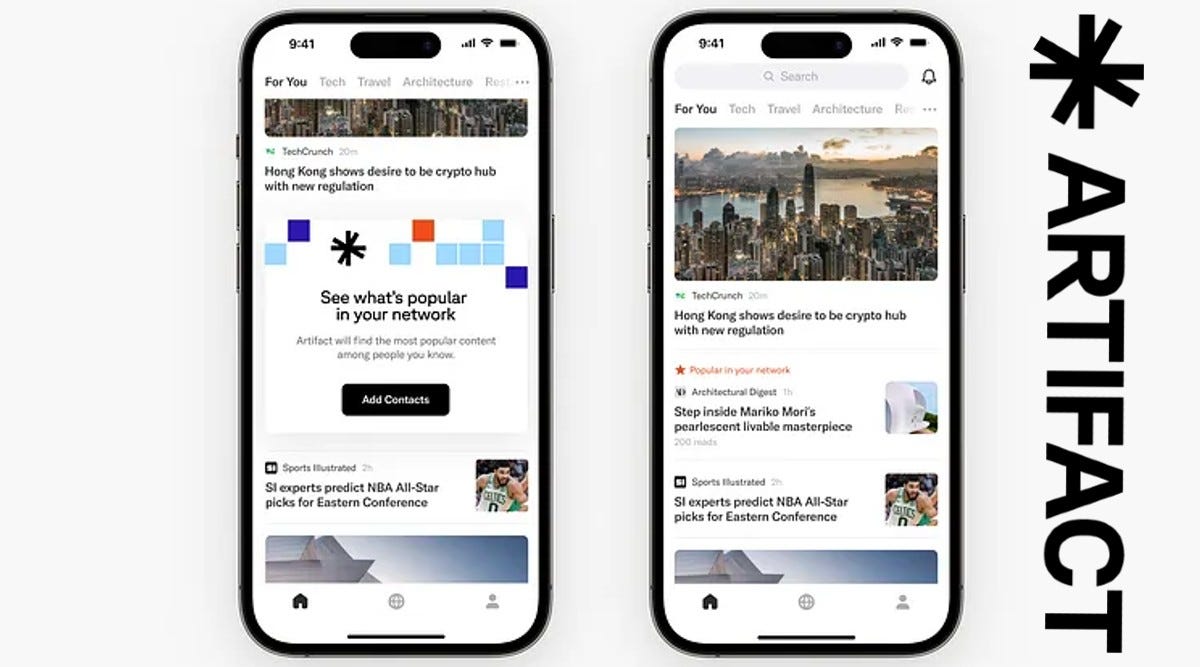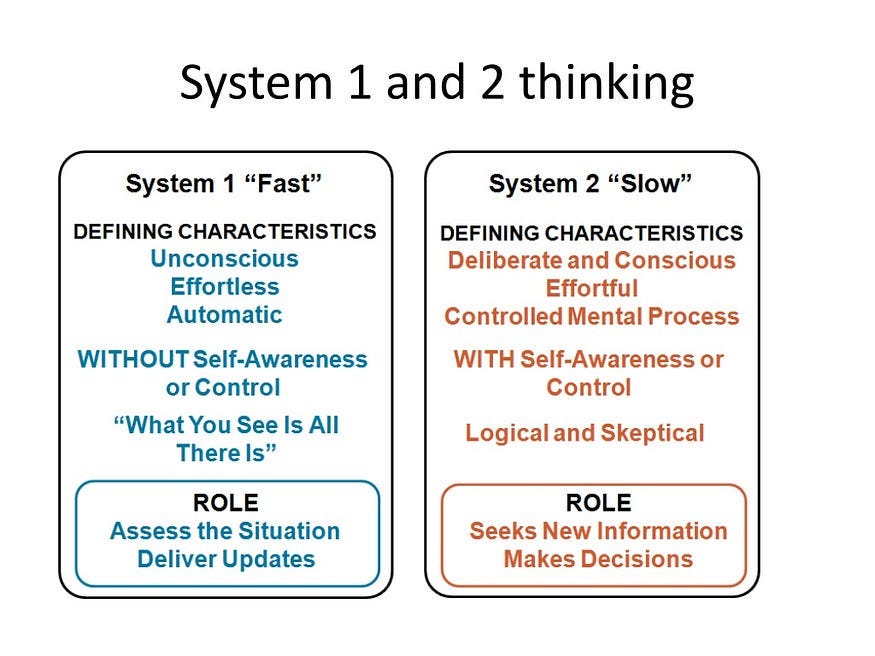A Brief History of Internet Culture and How Everything Became Absurd
There is no way to fully explain Internet culture because there is no singular culture. No matter what, someone will say the explanation is too ironic or serious or incomplete or stupid. So what’s the point? The point is that what goes on in the deep corners of the web is creating more consequences in real life each year and the average person has virtually no framework for understanding any of it, therefore dummies like me who spend all day online should attempt to bridge the gap. This is my attempt. It’s for the average person who wants to know some basic history and theory. It’s for the normie. It’s for the healthy, functioning human being who doesn’t spend day in and day out scrolling through the hellscapes of Twitter or Reddit or Tumblr or 4chan or YouTube or whatever. Even if you have no intention to spend more time in these worlds, it’s beneficial to have at least a surface understanding of them. Maybe. Uh. Click Here To Find Out!
As Internet culture evolved across platforms and categories, it became a tool to undermine institutions of ideology, advertising, government, and society as a whole. It wasn’t just for entertainment or news. It became a universal language connecting people from all over the world. Consider how new atheism and the online skeptic community arose in the 2000’s in reaction to organized religion, how Black Lives Matter dominated social media conversations from 2013–2015, how the undercurrent of 4chan created a meme war in the 2016 election, how thousands of careers have been created through social media platforms, or even just how so many online jokes and references have bled into mainstream culture the past several years. It’s insane. Much of how this all progressively came to be can be contextualized through the lens of civil unrest. Aspects can be derived from the avante-garde movement, postmodernism, civil rights movement, and so on. It birthed from rebellion. Cyberpunks. Nerds. Outcasts. Cultural critics. Minority voices. The disenfranchised. People who were (and are) dissatisfied with elements of mainstream culture or institutions and bled those criticisms onto the web through satire, irony, and various other observational styles. It was developed alongside countless niche cultures from blogging to sports to art and beyond, many of which have remained closed off in their own corners of the web, however the bulk of what we consider “Internet culture” stemmed from overlapping spheres, which we’ll cover below.
As traditional institutions have faltered and technological integration has advanced, everything has revolutionized. The entertainment industry, political spectrum, pop culture, access to information, and all of reality as we know it has streamlined into an endless click hungry feed on our devices. We view life through this microscope now, making what used to be a week’s worth of news only an hour’s worth. As our social attitudes scatter and general trust in preexisting institutions declines, reactive energy rises. This energy has most recently been funneled into the fusion of technology and people, which is highlighted through Internet culture. Over the past 20 or so years, both anonymous and public platforms have grown relatively parallel to one another, often creating different cultures with crossover in between. In order to grasp the overarching story of how this all came to be, we’ll take a look at the rise of social media, forums, smart technology, viral content, and how we went from image macros to memes.
The Early Evolution of Social Media and Blogs
Each year social media entwines more with every corner of the world. It steers global advertising, dictates the careers of public figures, hosts billions of people, and is responsible for countless other real life consequences. Without its free and open accessibility, Internet culture as we know it wouldn’t exist. That said, it’s important to know the history of how we got from Kodak to Snapchat, VHS to YouTube, dial-up to broadband, or Yahoo! Messenger to Facebook.
The origins of social media date back before the world wide web was even created. Bulletin board systems came to life in 1978 where users could direct chat, share software, and read news. In 1985, General Electric created GENie, which was an online service for GE that peaked around 350,000 users, including forums and various internal services. In 1986, Listserv debuted as a mailing list in which users could contact multiple people with one email (revolutionary for its time). Internet Relay Chats first appeared in 1988 and were used for file/link sharing and keeping in touch with others. Then as soon as the world wide web was released in the early 1990’s, social media began rapidly evolving alongside it. By 1994 The Palace was released, which was a program that allowed users to interact with one another on a graphical chat room server. AOL Instant Messenger (AIM) launched in 1997, as did the first official social media site, SixDegrees.
Links.net was considered the first blog in 1994, which was the personal page of Justin Hall. The blogger Jorn Barger later coined the term “weblog” in 1997, which was then shortened to “blog” by blogger Peter Merholz in 1999. Once blogging became popularized, there were social media and blog sites popping up in lockstep, such as LiveJournal and Xanga in 1999, Friendster and LinkedIn in 2002, then Myspace and Gawker in 2003. These sites were mostly public profiles where you could connect with friends, follow news, or interact with strangers from around the world. This laid the groundwork for eventual platforms like Facebook, Instagram, Twitter. While all this was happening, search engine tools were becoming the front page of the Internet in a way. See something you like? Now you can hop on Google then instantly share it with the world.
Between social media platforms and blogs, the groundwork for Internet culture began to take form. This is where the majority of public usage was taking place. However, most influential aspects of the culture itself actually stemmed from anonymous communities.
Anonymous Forums and Niche Corners of the Web
As these social media networks developed, a series of anonymous web communities began developing alongside them. If public social media sites and blogs were where the average person went, anonymous based forums and sites were where the nerds went. In the late 1990’s more niche comedy websites and forums such as Something Awful (1999) and Homestar Runner (2000) began popping up. These sites harbored various internet phenomena, making them an early destination for image macros, text-based formatted jokes, and various viral content. Something Awful in particular hosted some of the most notorious forums for Internet culture in the early 2000’s. For some reason or another, some of the most estranged, creative, edgelord, lunatics all came together for this site. As we see today, anonymity brings out the best and the worst of people. Needless to say, much of the slang, references, and group identities all started here.
In those early days, the majority of people who navigated these sites were gamers, programmers, web developers, and other tech-oriented (usually young) people. Nerds. And the Internet centralized culture for them to pour all their weirdness into a melting pot. However, what began as “nerd culture” was about to be skyrocketed into the mainstream. Harry Potter, Marvel, Lord of the Rings, anime, cosplay, sci-fi, gaming, you name it. As the Internet became more accessible, suddenly millions of people around the world became enthralled by these niche nerd subcultures, thrusting them into pop culture. Some early adapters, or “Internet hipsters” as I like to call them, hate that this happened. Some with fair reasoning, some not so much. A case could be made either which way now that the cat’s out of the bag and everyone is online. We have the best and the worst of human potential seen through a magnifying glass each moment of the day.
Internet Culture and Smart Technology Take Over
Between 2003–2007 we saw the first big cultural wave hit the Internet. Xanga, Friendster, Myspace, and Facebook began taking off for normies. YouTube hit the scene, changing everything for everyone. The rise of 4chan, Reddit, DeviantART, and Tumblr became centralized for nerds. These online communities all came together through shared interest of video games, music, TV shows, drama, relationship stories, social criticism, and various other forms of pop culture, often being obscure. This emergence of both public and anonymous social media platforms tapped into the human psyche in a way never observed before in history and we began noticing it right away. People became “addicted to their devices” as headlines postured. Just like kids used to pass each other notes in school, phones and computers became the secret language medium for passing information. Music went from a CD you needed money to buy to a file you could illegally pirate on sites like Limewire. Porn went from being a magazine that you needed to be 18 to consume, to being accessible with the click of a button. Almost instantaneously there was a generational gap created between most older and younger people in how this new technology was understood and utilized, and we’re still seeing that ongoing effect in 2018.
Much of these changes coincided with the accessibility of computers and even more importantly, smartphones. Smartphones have their own lengthy history to parse out, but became prominently integrated between 2005–2010 as devices became more widely available. This is when the competition for people’s attention expedited at wild rates. New models coming out multiple times a year, new social media platforms becoming popular, and a true defining of the age. Millennials (born between 1981–1997) largely regard this period as the glory days of the internet because they grew up as it was exploding, just like Gen-X (born between 1965–1979) largely regard 1999–2005 as the glory days since they experienced the start of it all.
Around 2008–2012 the second big cultural wave hit the Internet. Smart technology had become the norm. Meme aggregators and curators became more prominent like BuzzFeed, which tracked viral content, popularized listicles, and created a platform centered on shares rather than views. Suddenly, obscure corners and content online became more and more rare. The people who grew up producing and consuming this content were now working for media companies, which were fueled on finding and exploiting it for clicks. Millions of people were online at this point and had been active for years. There were more notable splits where you could follow the trend line of normies who jumped from Myspace to Facebook to Instagram, then nerds who jumped from Something Awful to Reddit to Twitter, with obvious crossovers and variations. As Internet culture became more “mainstream,” it pushed certain subgroups deeper. This time period is when sects of 4chan, Reddit, and Tumblr became more volatile. As those sites became flooded with new users exploring the deep web trying to escape the mainstream, it pushed people who were already part of the deep web even deeper. When you have an increasing number of people involved in anything, that’s bound to happen. This split began redefining the separation between public and anonymous based social media sites. The more niche something is, the more cool it’s perceived to be and special it really is, which is why so much of popular online culture is derived from those deeper online communities.
The Cultural Effects Of Rapid Technological Integration
Smart technology paired with social media hit the world fast and hard. There’s something to be said about how “now” is always the craziest time in history. Each year the world gets smaller and problems get more complex. As these sociological and psychological changes began impacting the masses, mostly being young people, there needed to be new adaptations to process the chaos. There was no education or research in place to help assimilate anyone into these newly integrated worlds between digital and human. The more confused, isolated, anxious, and overwhelmed everyone got, the more they took to Internet culture as a way to relate with one another through humor, absurdity, and irony. Even bringing up the mental health issues magnified by social media has always been difficult, especially for kids. How do you explain to someone that you have a cool phone, tons of friends online, and access to all the world’s information, but you’re still lonely? Or depressed? Or anxious? Mental health issues have always been stigmatized in most cultures and it’s clear that we live in a time where that stigma has actually decreased in many ways. However, there’s still a general disconnect between younger and older generations. We see this a lot with the “you don’t know how good you have it” attitude from older generations. This disconnect and these problems in cognitive development through the age of social media are still being evaluated through clinical studies at this point, but with the spiking mental illness epidemic most people concede there’s a strong degree of relation.
A micro-example of this occurring is through the world of Instagram, which has become integral to people’s public identities. Users want to be perceived a certain way that makes them seem happy or fun or popular. This has been observed through the hipster wave that arguably started socially in 2008, then became a marketing trend around 2010. The period highlighted being “authentic” and “natural,” pushing health, all natural, DIY, and all the rest. The more that wave pushed, the more it created an undercurrent of “finstagrams” (fake Instagrams) that started popping up around 2015. Finstagrams are Instagram accounts where people could curate secret feeds to vulnerably be themselves by goofing off, sharing memes, and posting unpolished pictures, while their official Instagram feeds were more PR friendly and glamorous. Many young people, especially young girls, have become so tethered to their identities on Instagram that it’s begun showing severe mental health repercussions. It’s easy to get caught in a cycle of comparing and competing for attention via vanity, since the platform is completely based on visual aesthetic.
It’s also important to reiterate the massive cultural shifts happening throughout the 2000’s that were being highlighted through Internet culture. People were able to communicate these shifts in real time with anyone around the world. We had voices to process the chaos. There were major sociological, economic, and geopolitical conversations around the world involving events like Y2K, 9/11 and The War On Terror, the new atheist movement, global warming, the Financial Crisis of 2007–2008, globalization, the tech explosion and competition between Apple and Microsoft, and way too much more to list. Much of Internet culture itself was created in reaction to these complex events happening around the world.
The Explosion of Viral Videos
The widespread usage of video sent Internet culture into maximum overdrive. Viral videos became king. Prior to YouTube, people would copy VHS tapes and share them with family or friends. The Winnebego Man was a classic viral example of this in the late 80’s. In 1996, Michael Girard wanted to show that movement could be programmed and projected via computers, so he designed the Dancing Baby, which was eventually turned into a GIF and virally spread. 2 years later we saw the Hampster Dance website by Deidre Lacarte that was viewed 17 million times in its first year up. These types of GIFs evolved quickly. Many people remember ROFLcopter, a term originated on a Warcraft III forum for trolling purposes. In 2004 Roflcopter.com was registered, featuring a GIF with the abbreviations ROFL and LOL as blades. These are some of the earliest examples of animations becoming videos, becoming memes.
YouTube launched in 2005 and really started taking off in 2006–07 with videos like Leprauchan in Mobile, Alabama, Star Wars Kid, Evolution of Dance, The Juggernaut, Powerthirst, Keyboard Cat, and RickRoll’D. It also created a space for creators to build their own media channels, something that was unimaginable before. If you wanted entertainment you went to TV or the movies or radio, now anyone could create and consume with a computer or smartphone. Suddenly millions of people who never would’ve been able to express their skills to the world had the chance to do so.
YouTube quickly became the hub for normies to consume Internet culture across the web. Users would make compilation videos including image macros, GIF’s, and various other media that became accessible for every day people. You didn’t need to be a member of a forum or spend time digging through Reddit, you could just get the best of the best stuff from YouTube (at least in theory). We saw the birth of some of the most iconic videos of all time between 2006–12 like Shoes, Charlie Bit My Finger, Double Rainbow, Charlie The Unicorn, Hide Yo Kids, Taking The Hobbits To Isengard, Chocolate Rain, The Greatest Freakout Ever, David After Dentist, It’s Peanut Butter Jelly Time, Rebecca Black’s Friday, Grumpy Cat, Charlie Sheen’s “Winning,” and Cash Me Outside.
Many regard Kony 2012 as the most viral video in history to that point with 100,000,000 views in 6 days, until Gangnam Style was released a few months later surpassing it with 3,000,000,000 views in 5 months and staying the most viewed YouTube video until Despacito reached 5,600,000,000 views in 2017. Viral videos have created some of the most viral and utilized memes worldwide, lending themselves to be remixed, parodied, and altered via every possible medium.
From Image Macros to Memes
Richard Dawkins coined the term “meme” in his 1976 book The Selfish Gene as a means to explain how information spreads throughout culture. Internet memes are a subset of this concept. Using this framework there are countless examples even dating back through pre-internet history that fit the definition. Take Kilroy Was Here as an example, which was a cartoon that started popping up all over the world during WWII, mostly in graffiti. In the 1960–70’s, Frodo Lives similarly began popping up all over America as part of the hippie movement in graffiti, t-shirts, bumper-stickers, etc. To this day people still celebrate 420 in cannabis culture, a meme that originated in 1971 between high school students. Internet detectives have uncovered tons of these examples, some are even being revived like the Keep Calm and Carry On poster that was commissioned in 1939 by the temporary Ministry of Information in England, or this meme that yesterdays-print.com uncovered from The Judge Magazine in 1921 that may be the very first of its kind.
Like previously stated, many of the first contemporary known memes were actually animations like Dancing Baby and Hamster Dance created in the 90’s, as well as image macros like All Your Base Are Belong To Us. In those early Internet days, the term “meme” wasn’t even used. People referred to unique images as image macros. It wasn’t until those image macros were aggregated across the Internet and began being repurposed that the term “meme” emerged. Other future defining trends were also popping up around the world at this time, like the invention of emoji’s that originated on Japanese mobile phones. Perhaps the earliest text example would be Godwin’s Law. This is one of the oldest memes still being used today. It was coined by Mike Godwin in 1990 on a discussion board and says “as an online discussion grows longer, the probability of a comparison involving Hitler approaches 1,” meaning the chances of someone mentioning Adolf Hitler or Nazis increases over time. Godwin is on record saying he hasn’t wanted to police people’s usage of his meme, but during the rise of political polarization in 2016–17, many white supremacists/nationalists began citing it to defend their behavior online. After the Unite the Right Rally, he tweeted this and spoke out on the subject.
Memes didn’t just take hold in videos or images, but phrases and art as well. We saw the origins of terms like YOLO that began as a meme in the early 2000’s. Smash Mouth’s song “All Star” was already a hit in 1999, but was made famous in the title of Shrek in 2001. Since then it’s been memed, parodied, and shared to oblivion. Another pop culture example of this is simply… Nicolas Cage. Know Your Meme cites the earliest memes of Nicolas Cage to 2005, including “Nicolas Cage Loves Mario Kart,” “Cage Rampage,” and more. In 2009, the Internet was blessed by Tumblr site Nicolas Cage As Everyone, a blog solely made for photoshopping his face onto everyone. Slender Man, who was a fictional supernatural character created by Something Awful user Eric Knudsen, became internet lore this year as well.
2008–09 was when memes first began surfacing from deep Internet culture onto mainstream Internet culture, but it wasn’t until 2010–12 that they truly became mainstream in real life culture. The origins of most of these popular first memes came from the early 2000’s or even late 90’s. Ones like Kanye Interupts, Rage Comics, Deal With It, One Does Not Simply Walk Into Mordor, Condescending Wonka, Success Kid, Philosoraptor, It’s A Trap, Ancient Aliens, Scumbag Steve, Chuck Norris Facts, U Mad, The Most Interesting Man In The World, Hide The Pain Harold, and Conspiracy Keanu were among the first widespread across platforms like Facebook. Along with Tumblr trends like Nicolas Cage’s Face On Things, there were others in 2012 like when blogger Miryuu Chan posted a GIF of Belle from Beauty and the Beast with Nigel Thornberry’s face, launching a new viral series of putting his face on Disney princesses and anyone else.
It would also be crazy not to mention the phenomena of sharing pet media here. Cute animals and pets have been shared since the dawn of the internet, and this time period saw an explosion of them on all platforms from Advice Dog to Grumpy Cat to LOLCats to Doge, and so on. Once memes became mainstream certain elements of pop culture became goldmines for mass produced content. Shows like The Office or Spongebob are among some of the most widely shared memes of all time, as well as video games like Fornite or Minecraft from more recently.
While this was happening there were many resources launching that aided in the spread of memes. Rocketboom launched Know Your Meme in 2008 as a database for meme history and analysis (without which this article would be impossible to write). In 2011 it was acquired by Cheezburger Network and now has over 2,700 confirmed meme entries. In 2010 websites like Meme Generator or IMGFLIP became popular free platforms where anyone could generate memes by uploading images and adding Impact font in top/bottom text formats.
Once memes had become part of everyday life, it wasn’t long until they started sparking interactive movements. There were positive trends like The Ice Bucket Challenge, which was a dare game where you had to pour a bucket of ice water over your head and nominate people for the same challenge in the next 24 hours and if they failed, they were expected to donate money to ALS (Lou Gehrig’s disease). In 2015 #TheDress became an internet wide debate via a Tumblr post that had people choosing sides on whether they saw the colors #BlackAndBlue or #WhiteAndGold. And who can forget Harambe? The 17-year-old gorilla who was tragically killed after a child fell into his enclosure in 2016, causing the world to solidify him as a meme legend.
In recent years there’s been a shift from most memes being shared with preexisting content on them, to actual templates being used where people could create their own versions. This expanded interactive quality and created all new possibilities for things to get “meta.” Between 2016–2018 some of the most prominent examples have been Roll Safe, This Is Fine, Netflix And Chill, Arthur’s Fist, Distracted Boyfriend, and Is This A Pigeon? As of 2018, a new wave of viral memes hits online culture every month. Looking at the calendar below created by @trigoMEMEtry you might note some pop culture memes from early in 2018 that already feel like a lifetime ago. The pace constantly increases. Now anytime a viral moment happens, whether it’s in the news, on a TV show, during a sports game, or whatever, it instantly becomes a meme.
2013: The Dawn of Online Politics
We all knew it would happen eventually. Old people had been posting about politics on Facebook for years. Trolls had be swelling in 4chan. Twitter was ready to burst. Over a billion people had entered the Internet and it was becoming more centralized every day. In 2013, the #BlackLivesMatter movement began on social media after African-American teen Trayvon Martin was shot by officer George Zimmerman, who was acquitted. Over the next year, it became a nationally recognized phenomena and ignited conversations on race across social media. Polarization ensued immediately. As social media flooded with heated political dialogue, that rhetoric leaked into the education system. As we can hopefully all admit, kids in their high school and college years are still developing their worldviews and are quite impressionable. This is natural and often leads to many of them expressing their views in radical ways. We began seeing a massive influx of what critics have named “social justice warriors,” who would lead demonstrations or protests that got picked up by the media. From 2014–2015 this evolved beyond race and into gender politics, and beyond. Eventually, conservative-leaning provocateurs began exploiting these situations by trolling social justice-oriented people (usually kids) on social media, then planning speaking engagements at universities and making a viral moment out of it, causing protests, counter protests, and a cycle of outrage that became impossible to ignore or stop.
Once this cycle began, it never stopped. One could argue that the media was trapped in the spokes of Trump’s wheel of outrage, which led to giving him more coverage and credibility leading up to the election. By 2014, the election cycle had begun and there were multiple culture wars occurring at once across the Internet. The notorious #GamerGate controversy ignited by mid-2014 over diversification, harassment, and other social criticisms in the video game industry. This changed the landscape of gaming communities all over the internet. It’s worth noting that there are over 2 billion gamers around the world and the gaming industry is bigger than the movie and music industries combined. This event had cultural ramifications that people on the outside are completely unaware of. It integrated politics and gaming in an unprecedented way and splintered multiple groups online.
As #GamerGate continued and evolved over the next couple years, large YouTube communities began political commentary, podcasts took off, Twitter was given new life with Donald Trump at the helm of media attention and Hillary Clinton getting in on the memes as well, such as with her “Delete Your Account” tweet, and every running candidate or relevantly related campaign person was memed to oblivion. 4chan introduced a level of trolling to the mainstream in this time that was completely unprecedented and is still being studied today. Terms like “redpilled,” “triggered,” “virtue signal,” and “cuck” became common in right wing circles and spread like wildfire.
In this time period, we saw movements reacting to one another on all corners of the political spectrum. One could argue the narratives looked something like this: the social justice left’s rise was in reaction to traditional institutions. The alt-right’s rise was in reaction to the rise of the social justice left. The far right’s rise was in reaction to the rise of socialist-leaning attitudes on the left. The far left’s rise was in reaction to the rise of fascist-leaning attitudes on the right and campaigning of Bernie. These narratives bled into one another and simultaneously created countless activist groups and subcultures, largely isolated from outside influence. Some notable new groups or movements that have formed in the past few years are #BlackLivesMatter, #MAGA, #MeToo, The Intellectual Dark Web, The YouTube Skeptic Community, BreadTube, and Chapo Trap House.
Reddit’s Role In Popularizing Memes
Reddit has become a central hub for fan bases, hate bases, and general information hubs for nearly anything you could imagine the past several years. Fan of Joe Rogan’s podcast? You’ll find entire spreadsheets meming his mannerisms. Fan of Shane Dawson’s YouTube channel? Here’s a starter pack. Love Seinfeld? Harry Potter? Are you interested in pictures of bread being stapled to trees? Or some obscure political ideology? Reddit has all your random bases covered.
Sites like Reddit have always attracted tech-oriented, male dominant demographics that enjoy posting or reading entertaining content anonymously. There’s no corporate big wigs controlling the content, minimal moderation, minumal ads, and a very functional design. Its core strength is interacting within communities and these features are remarkably easy to navigate on the platform. Reddit becomes more mainstream each year. In 2012 they had Barack Obama give an AMA (ask me anything). On that note, the political rise in meme culture was largely centered around Reddit with subs like r/The_Donald, r/TrumpCriticizesTrump, r/politics, and so on during the 2016 election, and this helped general meme culture to rise as well. Nothing brings people together and simultaneously tears them apart like some good old meme wars.
Reddit might not be the place where all original content is created, but it’s certainly the place where most of it is curated. The site’s meme sub members have grown exponentially the past few years, some into the millions — a few notable ones being r/BlackPeopleTwitter, r/DankMemes, r/MemeEconomy, or r/WholesomeMemes. A positive example of how Reddit’s meme culture would be when many subs came together in solidarity with Stefán Karl Stefánsson’s fight against cancer. Stefan was famous for his character “Robbie Rotten” in the children’s TV show “LazyTown” and was known for being a weird, positive, wholesome influence on a generation. Multiple subs rallied behind him, especially r/dankmemes, which has 1.4 million members who dedicated huge periods of time and energy to the cause and honored him in his tragic passing.
Here is an interesting case study theorizing how Reddit became as popular as it is today.
4chan and the War on Normies
Each one of these large culture-influencing sites have their own complex history, but 4chan is an exceptional example since it’s regarded by many as one of the deepest online communities. Many users reminisce that its heyday was shortly after the site launched in 2003 and that somewhere along the way, it began harboring disproportionate amounts of xenophobia, racism, sexism, and nihilistic attitudes, which it eventually became notorious for. Though it’s impossible to truly measure since it’s completely anonymous and there are no profiles tracking user activity. It’s always had trouble staying on servers due to its controversial and horrific content in general, but it’s also been home to some of the most iconic and mischievous moments in Internet history, many of which have been catalogued by Internet Historian on YouTube.
One of 4chan’s earliest spikes in publicity came from the Anonymous or “Anon” meme of 2003. Anon was a group who would target mass pranks on other online communities, popularizing the term hacktivism. Much of mainstream popularity growth was subsequently due to Reddit becoming mainstream, which was a platform that aggregated much of its content from 4chan. In 2011 Reddit was becoming everything 4chan despised. In their view, it was politically correct, over-moderated, and becoming littered with normies. Reddit was also largely responsible for the origins of “shitposting,” a now common term that describes ranges of trolling, spamming, thread jacking, and so on.
Because Reddit (along with other curating sites like FunnyJunk and 9gag) was largely responsible for bringing 4chan into the public eye by reposting content from it, users fought back by trying to become more offensive. Pepe (the frog) is the best example of this, which began as a generic reaction meme then became mainstream when Katy Perry tweeted it in 2014. This drove Anon to create more offensive Pepe content that ended up leaking onto Reddit and other parts of the web and becoming associated with different hate groups, the alt right, and Donald Trump. The backlash was perpetuated by the 2016 election and successfully distanced 4chan from the mainstream again, but it also created new subcultures of normies on Reddit, Youtube (etc.), full of people who unironically hated others. This was now a time where irony became compounded layers deep, making interpreting certain online cultures near impossible. Phrases like “tbh fam” originated ironically on 4chan in 2015, then became culturally mainstream, then ironically used in mainstream. An impossible trail to follow.
How (Weird) Twitter Expedited Internet Culture
Twitter was founded in 2006, but didn’t catch its stride until a few years later. Black Twitter was one of the first major culturally influential hubs on the site, which then made its way onto Reddit and all over the Internet. Eventually these cultural hubs started popping up everywhere. Sports, politics, gaming, you name it. Twitter really defined itself as a platform for memes and content creators in 2014. It was this time when it stopped using the service Twitpic and embraced user shared images on the site itself via posts and comments. In later years Facebook followed suit by allowing image/GIF responses, revolutionizing how we communicate online. Now it seems like almost every tweet on a given timeline is an image, GIF, or video. Twitter also cleaned up its layout, which in turn made tweets much more shareable to other platforms. At one point, most shared images across the Internet were from Tumblr or 4chan or Reddit, but after 2014 most of them became shared tweet screenshots.
A common theme throughout all this is that around 2014 was a major turning point in Internet culture. Twitter caught its stride this year more than any other. As we all know by this point, it became the political hot spot in the 2016 election cycle, so the media’s eyes were on it 24/7. This ramped up the outrage cycle of reporting political tweets. Tweets in general had become a primary form of Internet currency for all sorts of brands. Content thieves like FuckJerry and The Fat Jewish, as well as content stealing curator sites like BuzzFeed and Barstool had begun compiling people’s tweets as one of their main content sources. On top of all this, brands in general had discovered that Twitter was the best platform for organically reaching an audience. Wendy’s, Denny’s, Hamburger Helper, Taco Bell, and many other primarily food brands had begun mimicking cultural trends to build brands. This started all new strange conversations online about blurring the lines between brands and humans.
You can’t talk about Twitter without mentioning Weird Twitter. Weird Twitter refers to a loosely connected mass of Twitter users that create surreal, funny tweets with bad spelling/punctuation and innovative new formats and humor. They also hate being labeled Weird Twitter. The content they create ranges from political to absurdist to poetic. Jon Hendren AKA @fart is one of the most notable accounts associated with Weird Twitter from 2008. Hendren was a writer for Something Awful and started logging his favorite weird tweets in 2011, which partially led to this subculture getting noticed. Some of the most recognizable accounts associated are @wint, @pixelatedboat, @jonnysun, and countless others, many of which that have been banned or deleted over the years.
2012 is when Weird Twitter entered the mainstream. Articles were being written, tweets were being quoted. It was no longer a small isolated community. Twitter itself announced it had 140 million users and was generating 340 million tweets per day. It also acquired Vine, which launched in 2013, allowing users to create and share 6-second looping video clips, adding a huge asset to the company’s growth (although it didn’t last very long). The platform was being main staged with Weird Twitter at the forefront. Some even argue that most of the funny/joke style humor we now see today all across the web stemmed from Weird Twitter (and Something Awful) itself.
It’s An Absurd World
It would take multiple books to deep dive into each period of the development of the internet, social media, viral content, memes, and how culture shifted along the way. This is just a small window written to overview some of the most notable structures. The list of internet phenomena is vast and includes all elements of pop culture that would be impossible to compress into one article. But hey, you have to start somewhere, right?

